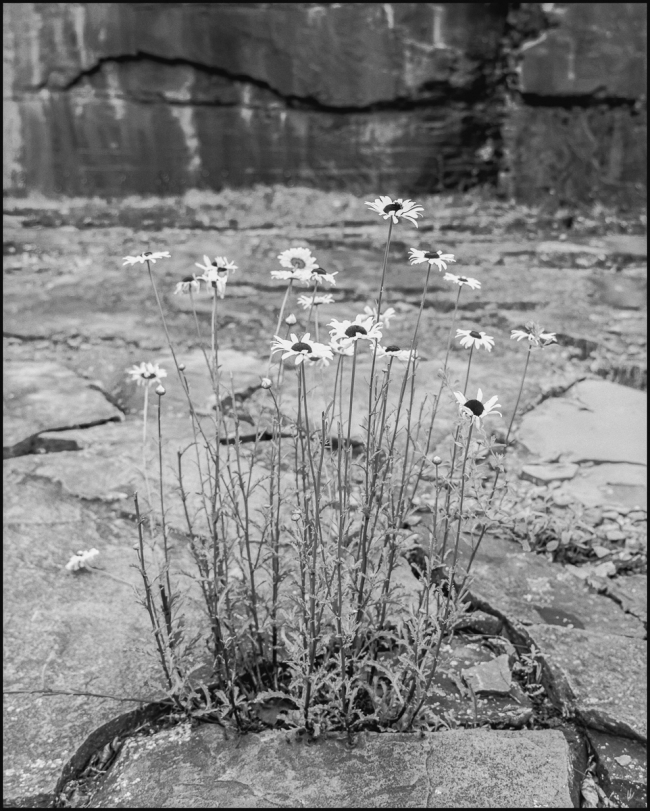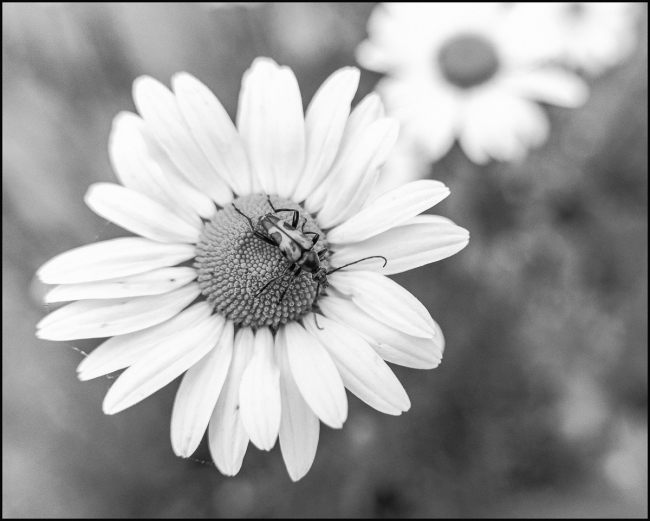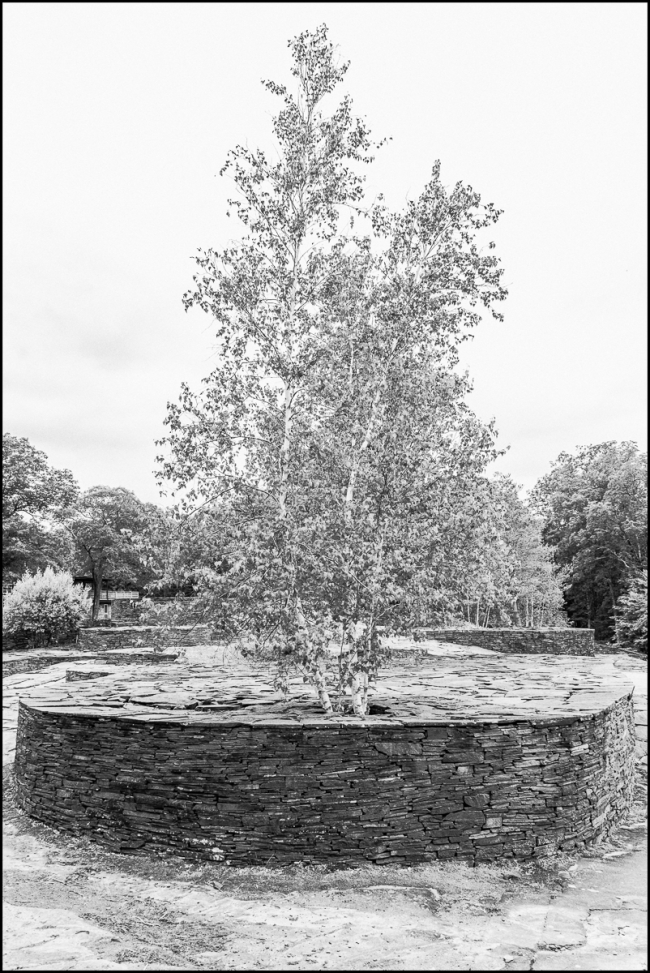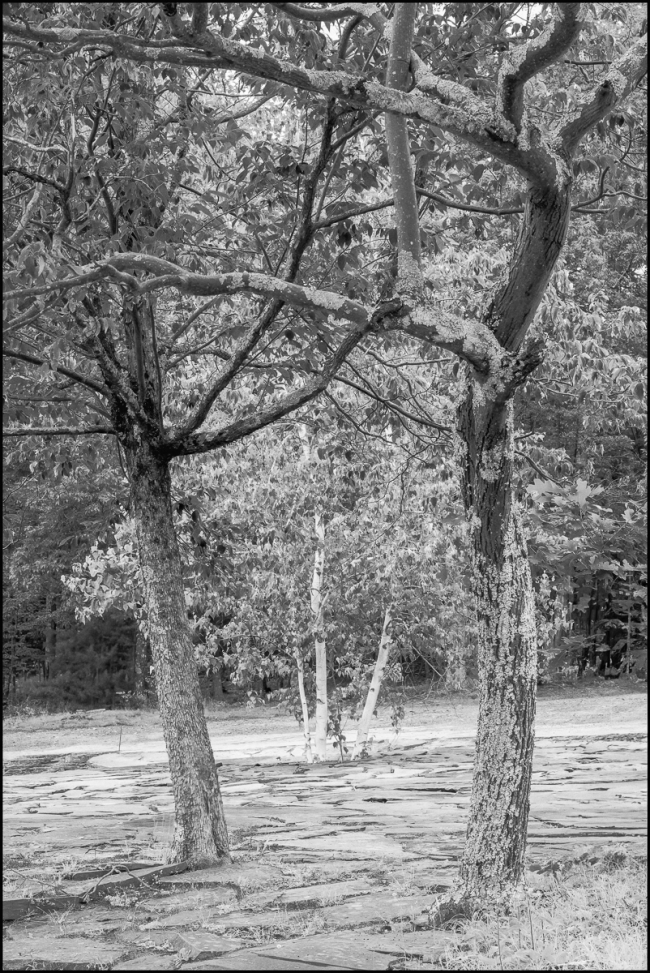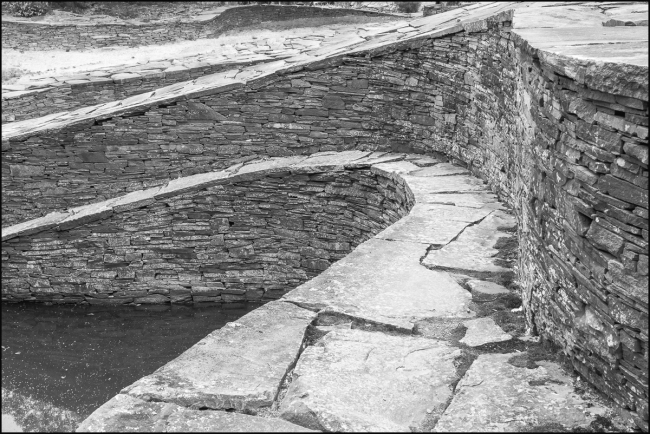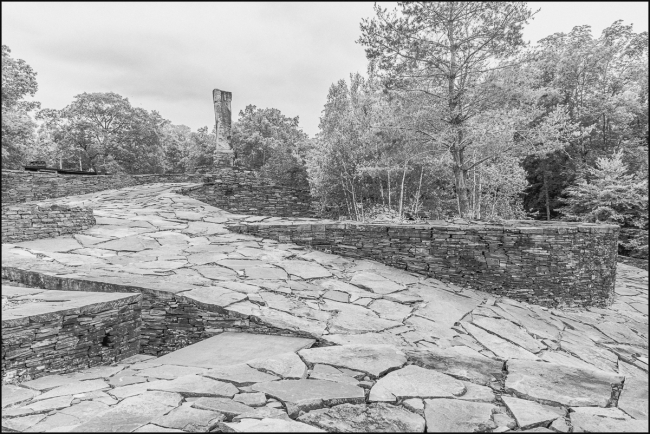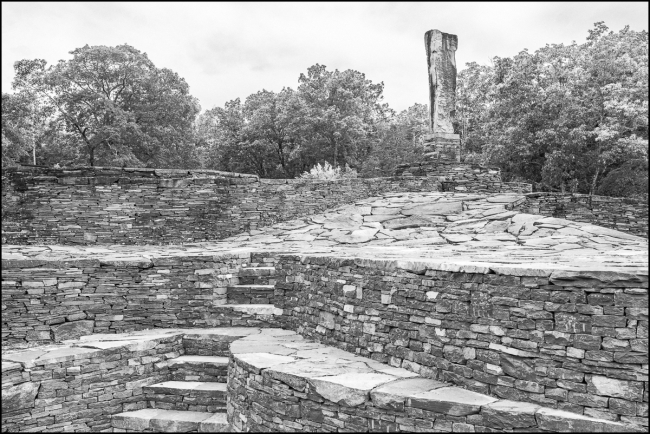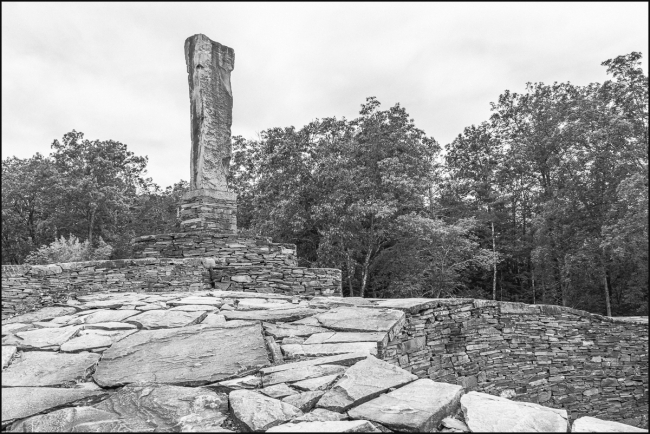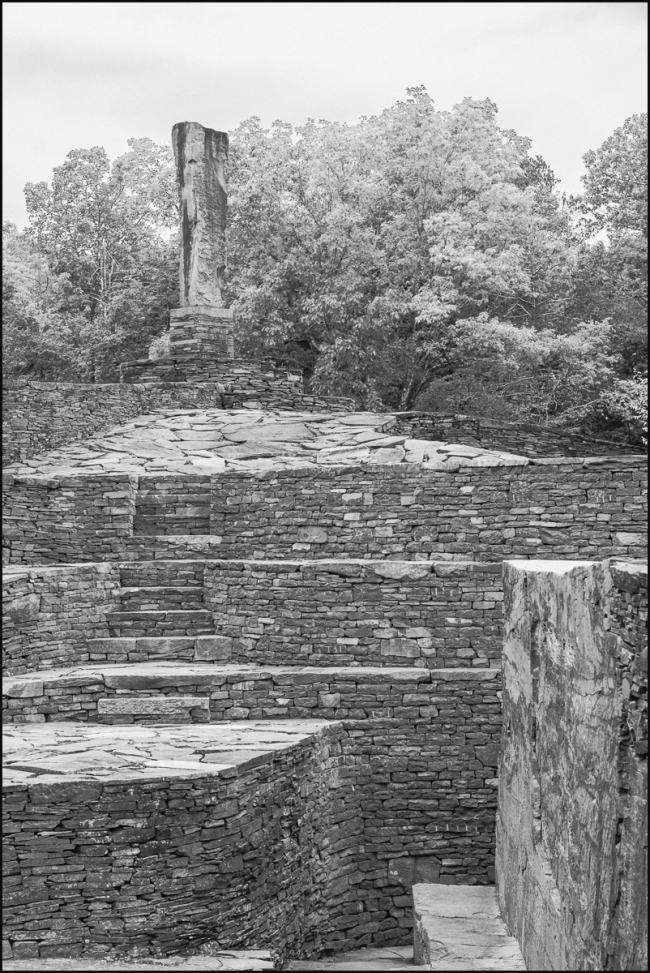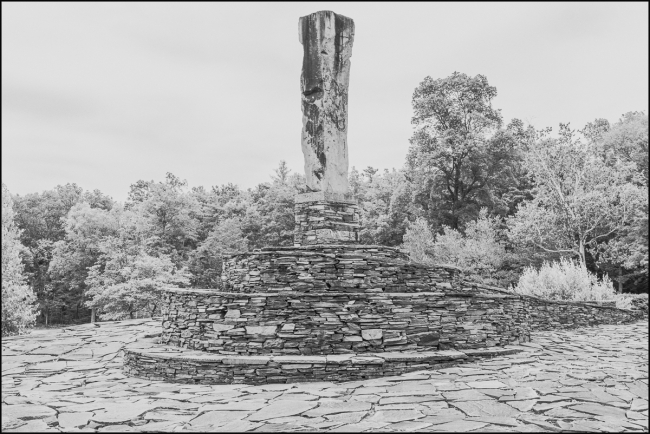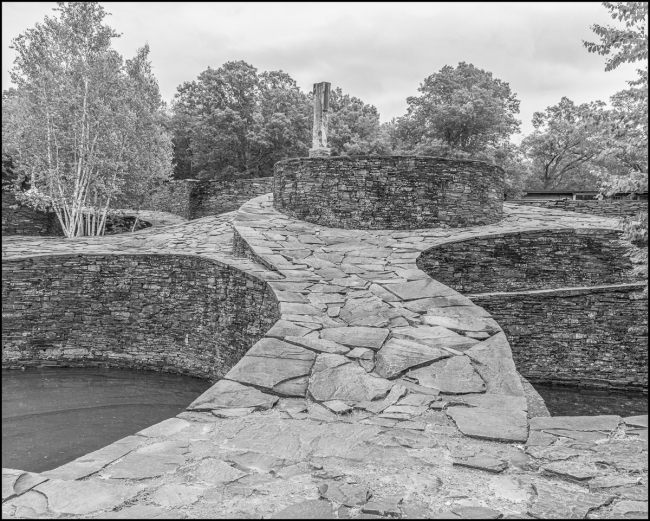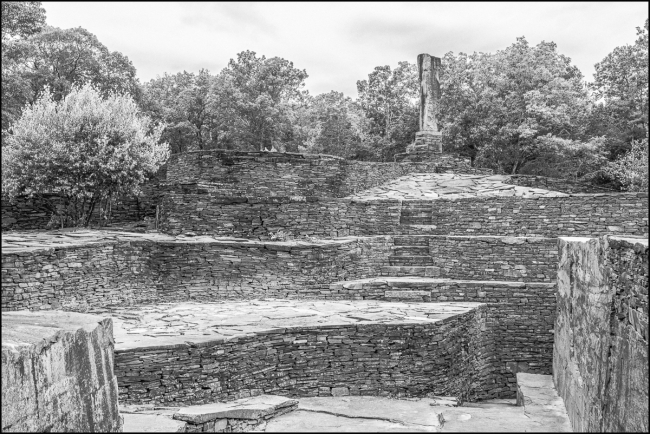According to Wikipedia:
“Opus 40 is a large environmental sculpture in Saugerties, New York, created by sculptor and quarryman Harvey Fite (1903—1976). It comprises a sprawling series of dry-stone ramps, pedestals and platforms covering 6.5 acres (2.6 ha) of a bluestone quarry. Fite, then a professor of sculpture and theater at Bard College, Annandale-on-Hudson, New York, purchased the disused quarry site in 1938, expecting to use it as a source of raw stone for his representational sculpture. Instead, inspired by a season of work restoring Mayan ruins in Honduras, he began creating a space to display the large carved statues he was beginning to create out of native bluestone. Using the rubble that had been left behind as the area was quarried, he built terraces, ramps and walkways to lead to the individual works, doing all the work by hand, and using the traditional hand tools that had been used by the local quarrymen before him. As the rampwork of his open-air gallery expanded, Fite realized that the 1.5-ton (1.36 metric ton) statue, Flame, which had occupied the central pedestal, had become too small for the scale to which his work had grown, and he replaced it with a 9.5-ton bluestone pillar he had found in a nearby streambed, intent on carving it in place as his tallest bluestone sculpture to date. Fite erected the focal monolith in 1962, 23 years after he had begun work on his quarry gallery.
Though Fite’s original plan was to carve the monumental river-stone in place, as his tallest bluestone sculpture to date (he had sculpted Flame in his indoor studio), once the stone was up, he realized that what he had originally conceived as a setting for sculpture had become a coherent sculpture in its own right, and a new kind of sculpture, in which carved representational work was out of place. Fite removed his other sculptures and relocated them on the surrounding grounds, and continued to work on this new sculptural concept for the remainder of his life.
Fite died on May 9, 1976, in the 37th year of his creation, in an accidental fall while working on the ongoing project. Work stopped that day, leaving some areas unfinished”.
For an interesting timeline of Fite’s work see Opus 40 History (from Quarrying to Present)
Taken with a Fuji X-E5 and Sigma 18-50mm f2.8

